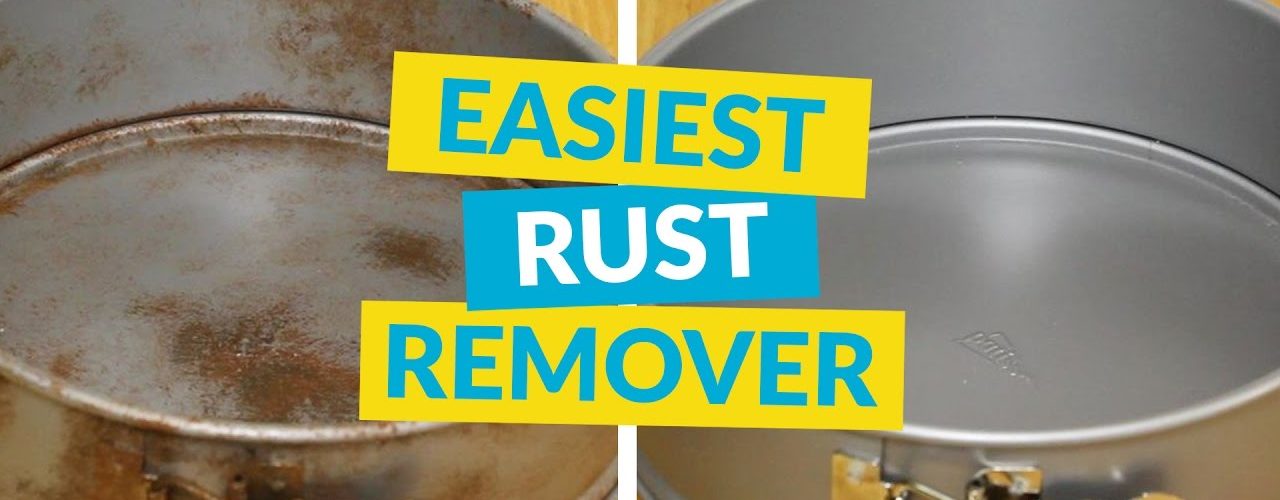Rust is oxidation. We have oxidation going on in our own bodies, explaining why there is so much advertising for antioxidant foods and pills. Slow oxidation is revealed in such ways as rust on metal. Rapid oxidation is fire. Now let’s get down to the nitty gritty of getting rid of rust on metal.
As rust forms on metal the actual metal itself is being eaten away. Advanced cases of rusted metal cannot be restored, but the rusting process can be halted. Removing rust and preventing recurrence are two different things. Some products are an all-in-one treatment for removing rust and protecting the metal surface. Rust preventative products are coatings that bind to the metal surface to prevent the metal from being exposed to oxygen.
Contents
Manual Removal of Rust
Sometimes just a bit of sandpaper can do an effective job of removing surface rust. Sandpaper is just an abrasive grit of varying coarseness glued to a paper or fabric backing. There are even sanding sponges that have the grit bound to the surface of a flexible pad that really does a great job of sanding contoured surfaces. Do not start with the coarsest grade piece of sandpaper that can be found in the hardware store.
Consider what is to be sanded. Is it a fine piece of wood? Is it an antique or modern firearm? Maybe it’s just an old lawnmower deck. Each job requires the use of a different type of sandpaper coarseness. In fact, each job will require a few different grades of coarseness starting from the coarsest to the finest in order to first remove the rust and then polish the surface with finer and finer grits. Super fine sandpaper grits can polish metal to a mirror finish.
Consider whether it will be best to wet sand or dry sand the item. Sanding clogs the sandpaper with dust particles. Wood is typically dry sanded while some metals are wet sanded. Wet sanding is just using something to wash away the sanded material as it is being sanded. Water works well, but not all surfaces can be wet sanded. The sandpaper being used for wet sanding will have it printed on the backing if it is suitable for wet sanding.
Maybe a grit paste such as rubbing or polishing compound or jeweler’s rouge will work better. These are pastes that have grit mixed in them and are applied with a cloth or a tool that has a polishing wheel or attachment. A little bit of paste is applied to the cloth or tool such as a Dremel tool, and the object is carefully cleaned of rust. This method works great for small parts that need to be cleaned of rust or polished.
Chemical Rust Removers
There are many products out there to chemically remove rust. Some also protect the surface as well as remove the rust in one step. By far the absolute best rust remover is Evapo-Rust and is available at Evapo-rust.com. Many chemicals are harsh with some being downright dangerous to use. Some of them are of dubious quality with the user ending up having to sand away the rust anyway. Evapo-Rust is different. Evapo-rust works by a process known as chelation. The solution grabs hold of iron particles, binds to them and puts then in the solution. Iron oxide is rust. The Evapo-Rust solution has a strong affinity for chelating iron oxide. It easily removes iron oxide, but leaves alone the stronger bonds of iron in the metal that is not rusted yet.
One great thing about Evapo-Rust is that it can be reused over and over until the solution has just too much iron oxide bound up in it to still work. Another great thing is that Evapo-Rust is non-toxic. It won’t hurt skin. It is non-corrosive and does not emit any noxious fumes. It is biodegradable and safe enough to be dumped into the sewer when the solution is used up.
Evapo-Rust does not protect metal once the rust is removed, and the only drawback may be that the object needs to be soaked in the Evapo-Rust for it to work well. Consumers have found unique ways of getting even larger objects such as rifle barrels to be fully submerged in small amounts of Evapo-Rust by using a piece of PVC pipe as a container instead of a big bucket or tub. Long narrow objects that can fit in a small diameter piece of PVC pipe capped at one end will require less Evapo-Rust to be needed than if a tub or bucket were used.
Protecting Metal After Rust is Removed
Many metal objects are just painted after rust is removed. Paint provides a barrier protecting the bare metal from being exposed to rust inducing oxygen. Some surfaces such as firearms are blued or have other protective finishes applied to them. If the object cannot be painted and if there are parts that are still bare metal such as what would be found on a firearm, the Tuf-Cloth available from Sentrysolutions.com provides an excellent rust protection barrier. Originally designed to protect the metal of firearms exposed to combat conditions, it is also used for application to many other items needing an easy way to apply a rust preventative. Just use the cloth to wipe the object down. That is all it takes, and it works.
For more information check out the following YouTube link:
<>
<>



